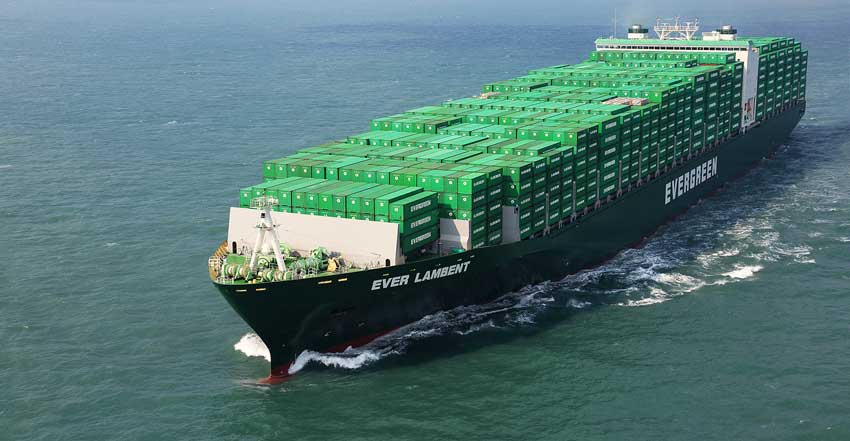Challenges And Solutions In Securing Green Fuel Supply For The Shipping Industry

8 September 2023
Overview: Green Fuel Supply in Shipping Industry
The global shipping industry, responsible for moving over 80% of the world’s trade, is facing a daunting challenge – securing a stable and sustainable supply of green fuels. As the world grapples with the urgent need to reduce carbon emissions and combat climate change, the maritime sector finds itself at the forefront of the transition to cleaner and greener energy sources.
The Maritime Industry’s Carbon Conundrum
Shipping, traditionally reliant on heavy fuels like diesel and bunker oil, has long been a significant contributor to greenhouse gas emissions. It is estimated that international shipping alone accounts for approximately 2-3% of global CO2 emissions, a number projected to rise if no significant changes are made. To mitigate this impact, the industry has been under increasing pressure to transition to cleaner alternatives.
The International Maritime Organization (IMO), a United Nations agency responsible for regulating shipping, has set ambitious targets for reducing emissions. The organization’s initial strategy aims to reduce total annual greenhouse gas emissions from international shipping by at least 50% by 2050 compared to 2008 levels. To achieve this, the maritime industry needs to transition to low or zero-emission fuels.
The Green Fuel Challenge
While the vision of a carbon-neutral maritime sector is admirable, the practicality of achieving it remains a considerable challenge. The primary hurdle is securing a reliable supply of green fuels at scale.
- Hydrogen and Ammonia: Hydrogen and ammonia are two of the most promising green fuels for the maritime industry. However, producing these fuels in sufficient quantities and at competitive prices is still a work in progress. Hydrogen production, particularly green hydrogen derived from renewable sources, requires significant investment in infrastructure and technology. Ammonia production, while less energy-intensive, faces similar challenges of scale and infrastructure development.
- Biofuels: Biofuels derived from renewable sources such as algae or waste materials offer a promising pathway towards reducing emissions. However, the production of biofuels on a large scale is constrained by land and resource limitations. Additionally, competition with other sectors like aviation and ground transportation for biofuel resources further complicates matters.
- Methanol and LNG: Liquified natural gas (LNG) and methanol are considered transitional fuels. While they produce fewer emissions than traditional fossil fuels, they are not entirely carbon-neutral. Moreover, the sustainability of LNG production has been questioned due to concerns about methane leakage during extraction and transportation.
- Electrification: The concept of electrifying ships using batteries or fuel cells has gained traction, especially for short-sea and inland waterway transport. However, the development of infrastructure for charging or refueling these vessels is still in its infancy and is limited to specific regions.
- Regulatory Challenges: The maritime industry’s transition to green fuels is further complicated by the need for global standards and regulations. Different countries and regions have varying policies and incentives for promoting green fuels, creating a fragmented landscape that hinders investment and development.
Innovative Solutions and Industry Collaboration
Despite these challenges, the maritime industry is not standing still. It is witnessing a wave of innovation and collaboration aimed at overcoming the green fuel hurdle.
- Research and Development: Companies and research institutions are actively engaged in developing new technologies for green fuel production and storage. These efforts are focused on making these fuels more cost-effective and sustainable.
- Investment: Financial institutions and governments are recognizing the importance of green shipping and are providing funding to support research, development, and infrastructure projects.
- Collaboration: Industry stakeholders, including shipowners, operators, and fuel producers, are working together to form alliances and partnerships. These collaborations are essential for sharing knowledge, pooling resources, and accelerating the transition to green fuels.
- Policy Initiatives: Governments around the world are implementing policies to incentivize the use of green fuels in shipping. Tax breaks, subsidies, and emissions regulations are some of the tools being employed to promote sustainable practices.
The Road Ahead
Securing a sustainable supply of green fuels for the shipping industry is a complex and multifaceted challenge. It requires concerted efforts from governments, industry players, and the broader energy sector. While the path forward is not without obstacles, the imperative to reduce emissions and combat climate change makes this transition unavoidable.
In the coming years, stakeholders must continue to invest in research and development, foster collaboration, and advocate for regulatory consistency on a global scale. The transition to green fuels in the maritime industry is not just an environmental imperative; it represents an opportunity to reshape the sector for a more sustainable and prosperous future.
As the world watches the shipping industry grapple with this challenge, there is hope that innovative solutions and a collective commitment to a greener future will pave the way for a maritime sector that is both economically viable and environmentally responsible. The journey to secure a stable and sustainable supply of green fuels is a pivotal chapter in the larger story of humanity’s efforts to address the urgent threat of climate change.
Click here to join our Telegram chanel
You will get information, news, and support related to Merchant Navy.
